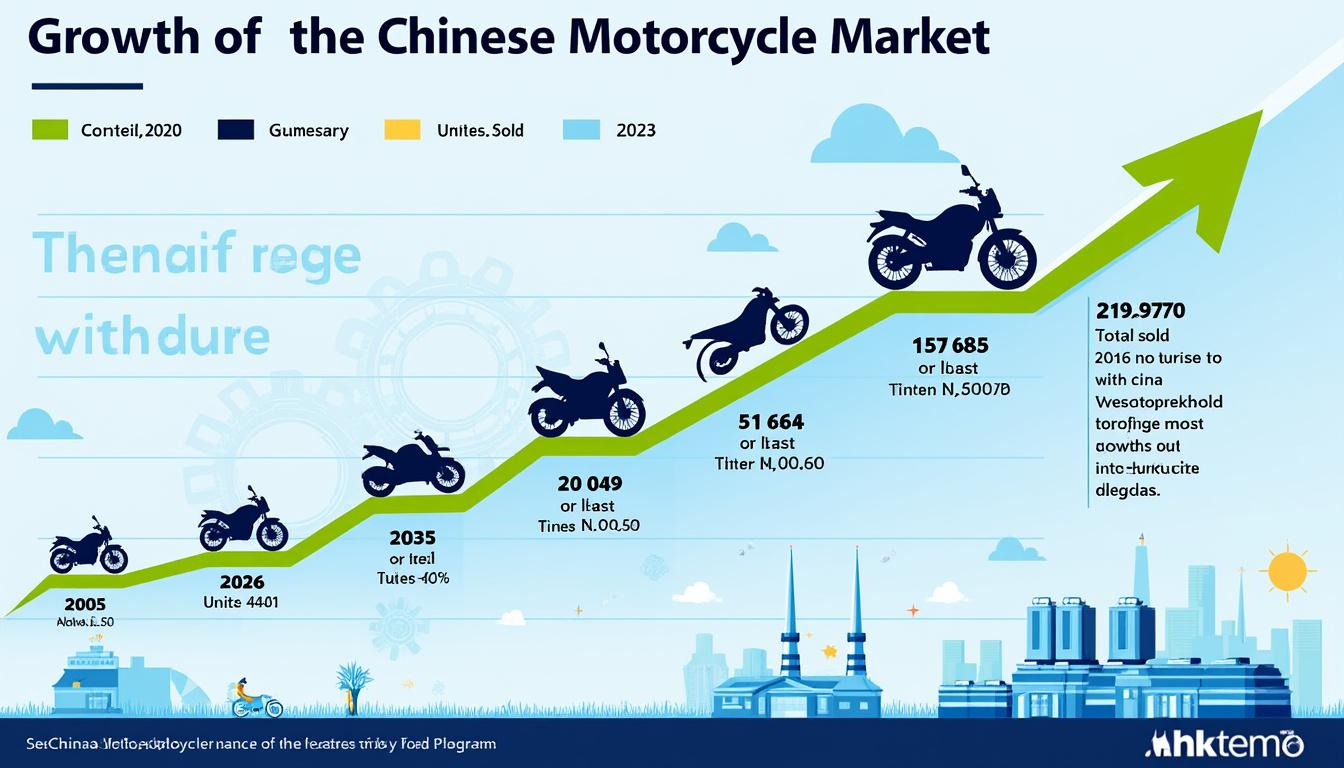Japanese strategies to cope with China's growing influence

In a world where economic and geopolitical balance is constantly evolving, Japan finds itself at a crucial crossroads in the face of China's growing influence. Due to the rise of Chinese companies and their increasingly marked presence in the global market, particularly in the two-wheeled sector, Japan must adopt innovative strategies to preserve its position. Japanese industrial giants such as Sony, Toyota, and Honda are mobilizing to modernize their infrastructures, strengthen their competitiveness, and invest in new technologies to face the competition. The challenge is substantial: how can the country maintain its influence on the global stage while countering an increasingly pressing threat?
The Rise of Chinese Companies and Its Impact on the Japanese Market
The two-wheeler market is a key example of the rising tensions between Japan and China. Brands such as CFMoto, Zontes, and QJMotor are carving out a significant market share, particularly in Europe, where their double-digit growth is noted. For instance, it is relevant to point out that sales of Chinese motorcycles are sharply increasing, leading to a decline in Japanese brands.
This dynamic illustrates the necessity for Japanese companies to react quickly. Indeed, the globalization of the market waits for no one and the capacity for innovation becomes crucial. How then can Japan react to this threat? The answer lies in a strategy of reinforced industrialization and investment.

Investing in New Infrastructures to Compete
To stay ahead, Honda and Suzuki are considering increasing their production with giant factories in India, a rapidly expanding market. For example, Honda's Vithalapur plant, which will have a fourth production line by 2027, is designed to produce 2.61 million two-wheelers per year, which represents one vehicle every twelve seconds.
On the other hand, Suzuki's project in Kharkhoda, with an investment of 137 million dollars, aims to produce 750,000 units annually, thus strengthening their position not only in the Indian market but also internationally. These initiatives illustrate the willingness of Japanese companies to adapt their production to the growing needs of the global market and to remain competitive against giants like Chinese brands.
| Manufacturer | Factory Location | Production Capacity | Investment |
|---|---|---|---|
| Honda | Vithalapur, India | 2.61 million two-wheelers per year | N/A |
| Suzuki | Kharkhoda, India | 750,000 units per year | 137 million dollars |
These developments are not limited to production alone; they also signify a strategic shift towards emerging markets that could represent a viable and lucrative alternative to traditional dependence on developed markets. This not only helps to maintain a competitive advantage but also secures supply chains against global economic disruptions.
The Challenges of Relocalization in Supply Chain Management
For Japan, one of the biggest challenges remains its dependence on China, particularly in terms of supply chain. As the COVID-19 pandemic revealed major weaknesses in this system, Japanese companies are becoming aware of the need to diversify their sources and relocalize certain parts of their production. This movement is not just a response to the crisis but is part of a broader effort to ensure Japan's strategic autonomy in the face of fluctuations in the international market.

Relocalization Models: Opportunities and Risks
Relocalizing also means adopting new technologies and methodologies to improve production. For example, companies like Canon, Panasonic, and Mitsubishi are exploring innovative solutions such as Industry 4.0, which allows for advanced automation and better resource efficiency.
- Reducing transportation costs
- Improving delivery times
- Enhancing production flexibility
- Creating local jobs
- Optimizing the use of infrastructures
However, this relocalization presents risks. The initial investment can be high, and there is always a lack of local expertise in certain technologies. For instance, Fujitsu is focusing on upgrading its technological capabilities through collaborations with innovative local start-ups. This could help accelerate the acquisition of necessary skills while reducing training trips abroad.
The Japanese Response to Chinese Initiatives: A Proactive Diplomacy
Japan is not only responding industrially; it is also tackling the issue from a diplomatic angle. In response to China's Belt and Road Initiative, the country has developed a strategy called Free and Open Indo-Pacific. This framework aims to establish strong partnerships in economic, military, and strategic areas. To date, Japan's efforts are reflected in intensified exchanges with its neighbors and the promotion of quality infrastructure projects.
Strategic Partnerships and Collaborations
This cooperation framework extends to various sectors, including technology, energy, and trade. By proposing sustainable alternatives and enhancing connectivity, Japan seeks to position itself as a key player in the Indo-Pacific region and attract developing countries.
| Partner Countries | Cooperation Area | Ongoing Projects |
|---|---|---|
| India | Technology and Infrastructure | Development of a transport corridor |
| Australia | Security and Defense | Joint military exercises |
| South-East Asia | Economy | Partnership for ecological innovation |
These collaborations aim to create a counterbalance to China's growing influence in the region while promoting a common vision of sustainable and inclusive development. Thus, Japan positions itself not only as an economic player but also as a moral leader on the international stage.
Culture as a Lever of Influence: The Rise of Japanese Soft Power
In a context of intensifying geopolitical tensions, the importance of soft power should not be underestimated. Japan, with its rich and diverse culture, uses this asset to broaden its global influence. Companies such as Nintendo, Hitachi, and SoftBank play a fundamental role in shaping Japan's image abroad, not only through their products but also through their commitment to values such as innovation and sustainability.
Cultural Sectors as Ambassadors of Japan
Japanese culture is expressed through various fields such as animation, music, and gastronomy. International events such as animation festivals, culinary exhibitions, and J-Pop concerts contribute to presenting a dynamic image of the country to the world. In 2025, Japan expects to welcome a record number of international visitors eager to discover the cultural richness of the archipelago.
- Exhibitions of traditional and modern arts
- Promotion of Japanese cuisine internationally
- Film and animation festivals
- Collaborations with foreign artists
These initiatives aim to establish trust relationships and create a global community of intercultural dialogue. By integrating culture more into its diplomatic strategy, Japan seeks to strengthen its identity while addressing the growing competition from other nations, particularly China.
Future Technologies and Innovation: A Strategic Challenge
Finally, one of Japan's most promising responses to China's growing influence lies in its commitment to technological innovation. Investments in research and development are a key focus for Japanese companies. Companies such as Fujitsu, Panasonic, and Canon are intensifying their efforts in the fields of green technologies, artificial intelligence, and robotics.
Examples of Innovative Initiatives
Japanese companies are working on transformative projects, such as the development of charging infrastructure for electric vehicles or the integration of artificial intelligence systems into industrial processes. These efforts not only meet the growing demand while reducing environmental impact but also position themselves as leaders in the global market.
| Company | Innovative Projects | Application Areas |
|---|---|---|
| Fujitsu | Development of AI in industry | Optimization of production chains |
| Panasonic | Renewable energy technologies | Sustainable habitat |
| Canon | Advanced 3D printing | Custom manufacturing |
These projects demonstrate how Japan strives to reinvent itself and show creativity in a changing world. Innovation becomes the weapon that will enable the country to compete on the global stage. By investing in futuristic solutions, Japan aims to consolidate its position against the increasing competition from China while adapting to the challenges of tomorrow.
Source: www.caradisiac.com
Leave a Reply

Articles relatifs